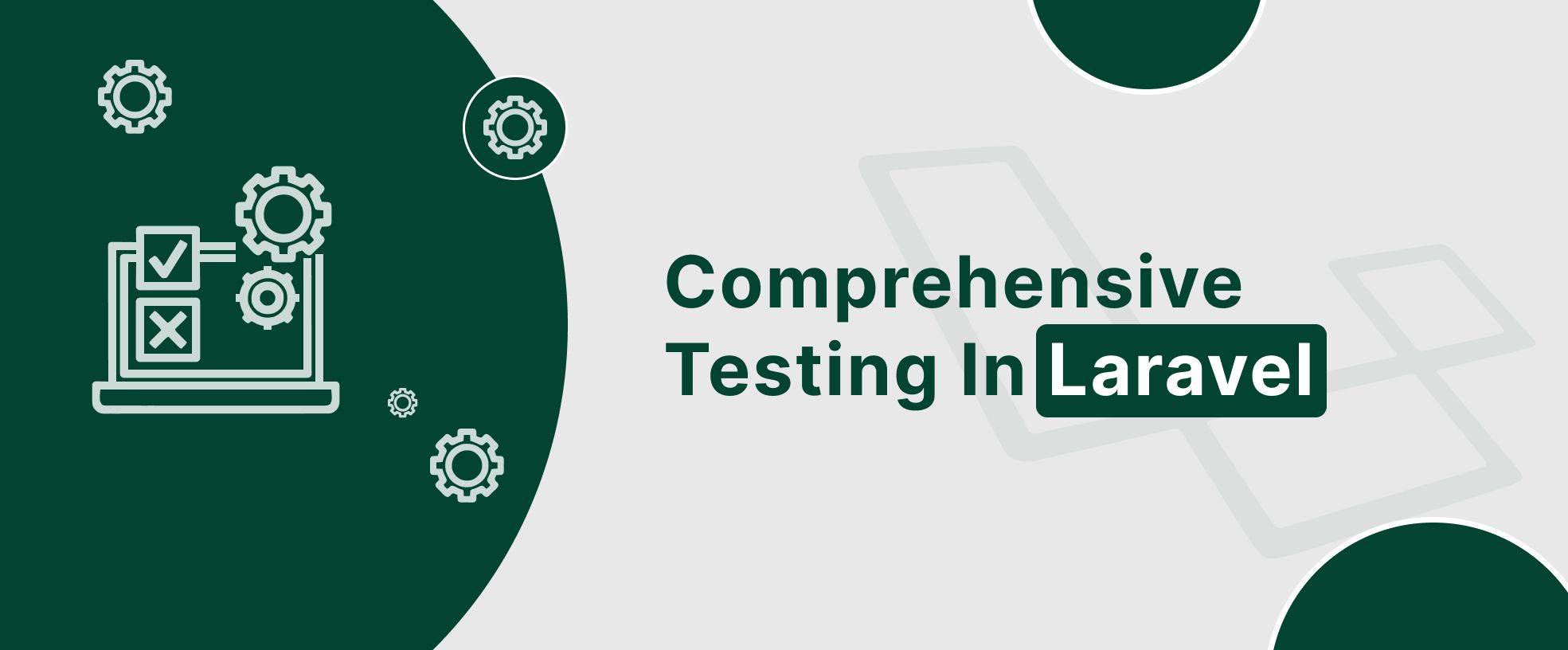How to Get Started with Laravel Unit Testing – A Developer’s Handbook

Significance of Laravel Unit Testing in the Eyes of Our Laravel Developers
Since version 5.2, Laravel has focused heavily on testing. Laravel experts at iCommuneTech have described the significance of Laravel unit testing in the following way.
Different Types of Unit Testing in Laravel
Laravel supports a diverse array of testing strategies, including the following.
Laravel Unit Testing:
Laravel unit testing focuses on independently testing specific units of code. Thus, it facilitates granular analysis and pinpoint errors or problems in a controlled environment. Developers can identify bugs by scrutinizing the smallest part of the code in isolation.
Unit testing in Laravel rigorously evaluates the functionality of each unit and ensures that individual code components perform as intended, contributing to a robust and dependable codebase.
During refactoring, unit tests act as a safety net and enable developers to make changes in code with enough confidence. Laravel Unit testing contributes to the enhancement of code maintainability by verifying that individual code components are continuously operating correctly.
PHPUnit supports data-driven tests within multiple scenarios to remain effective. PHPUnit is seamlessly integrated into the Laravel framework, which makes it easy to set up and run tests.
Laravel Feature Testing:
Laravel feature testing involves evaluating specific features within the border context of the entire Laravel application. Thus, it ensures that newly created features function seamlessly. Therefore, another name for feature testing is acceptance testing.
The feature testing recognizes potential problems/errors in advance that may not be visible in the isolated environment. Feature testing in Laravel prevents regressions by thoroughly validating new features. Thus, it prevents unintended consequences that might be apparent from the introduction of new features.
Feature testing confirms that new features meet user expectations and deliver exceptional user experience. Thus, this user-centric approach maintains user satisfaction and engagement.
Feature testing provides an opportunity for functional integration and helps recognize issues upfront while introducing new elements.
Developers can consider the impact of new features on the scalability of the application through feature testing.
Integration Testing in Laravel:
As its name suggests, integration testing enables developers to evaluate the interactions between different components or modules of an application. Thus, it ensures that integrated parts/components work seamlessly together. The integration testing in Laravel ensures that processes and data flow smoothly, preventing disruptions to the user experience.
This testing ensures effective dependency management. Thus, it prevents cascading failures when changes are made to one part of the application. The integration testing validates the consistency of data exchange between integrated components. So that information transfers accurately and aligns with application requirements.
HTTP Testing:
HTTP testing evaluates application responses to simulated HTTP requests. Thus, it ensures the correct functionality of controllers, routes, and middleware by a comprehensive assessment of the HTTP layer in the Laravel application.
The HTTP testing provides the following advantages.
Database Testing:
Database testing involves optimizing Laravel database queries. Thus, it focuses on the enhancement of the efficiencies of interactions with the database and contributes to the overall performance and reliability of the Laravel application. The testing offers the following advantages.
How to optimize your Laravel application for performance!
Tools to Use for Laravel Testing
Laravel has a rich ecosystem that provides a comprehensive toolkit for testing in Laravel.
Let’s learn them in brief.
PHPUnit:
It’s a default testing framework integrated into Laravel. It allows developers to write comprehensive and structured tests for a range of testing scenarios and Laravel test cases. It offers the following advantages.
Mockery:
It’s a mocking framework. It offers a toolkit to create mock objects and isolate components during the testing process. It’s a valuable tool for simulated dependencies and behaviors to enhance the precision and focus of unit tests. Mockery has the following characteristics.
Dusk:
It’s a unique tool for end-to-end testing within Laravel. It’s designed for browser automation to simulate UIs on the front end of the application. It has the following characteristics.
Faker:
It generates fake and realistic data to create diverse datasets for testing scenarios. It has the following characteristics.
Codeception:
It provides support for various testing types, such as functional, acceptance, and Laravel unit testing. It has the following characteristics.
Contact Us now!
How to Write Testing in Laravel?
At iCommuneTech, we follow the best practices and employ key strategies to create efficient testing in Laravel. Let’s take a glimpse of it.
Test Structure:
We create a clear test structure that goes beyond mere organization. It influences the readability and maintainability of the test suite. Our test structure has the following characteristics.
Targeted and Meaningful Laravel Test Case:
Here, each Laravel test case should focus on specific functionality. So, it provides a comprehensive yet precise evaluation of the codebase. It has the following characteristics.
Laravel Testing Helpers:
Laravel testing helpers have been explicitly designed for Laravel applications. So, they enhance the testing processes to allow more concise, expensive, and Laravel-specific assertions. It has the following characteristics.
10+ expert Laravel tips and tricks to follow in 2025!
Wrapping Up:
The modern web is facing a myriad of cyber threats and UX challenges to meet the anticipations of contemporary web users. These make effective Laravel testing mandatory. We have presented a comprehensive developers’ handbook on Laravel testing. We narrated different test types, testing tools, and some best testing practices in brief.
Suppose you need helping hands from an expert and experienced Laravel testing team. In that case, iCommuneTech a Laravel development company, provides an opportunity to converse with such a team to satisfy your curiosity and offer a free quote for your next Laravel testing project. Let’s request to meet the team and go ahead with your project.
